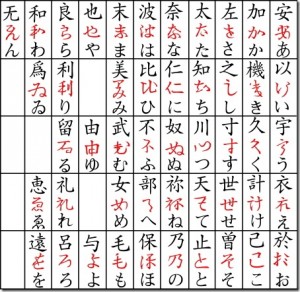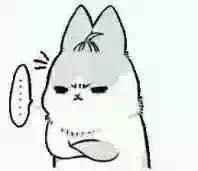You would find Chinese and Japanese similar to each other at the first sight. At ancient times, Japan had its own oral language but did not have specific characters. Later on, Chinese culture and language were brought to Japan, and some scholars started to use Chinese characters (called kanji) to represent Japanese language which had the same pronunciation. For example, mountain “山” (yama) was thus written as “也麻” (yema) in Chinese. Manyoushuu, Japan’s earliest collection of poetries, was written in such method. However, many kanjis were too difficult for people to memorize and write, so gradually only the radicals were used. (As shown in the picture.) And as time passed these radicals became hiragana and katakana, the basic elements of modern Japanese.
 (Hiragana. Pic from Google.com)
(Hiragana. Pic from Google.com)
Still some kanji are retained; part of them really sound like Chinese and stand for exact the same meanings, but the other part are totally different. As a Chinese, I feel very convenient as well as annoying. For example, “先生” (sensei). This means teacher in Japanese and Sir/Mr in Chinese. But because in the past Chinese people indeed called their teacher “先生”, these two kanjis are very easy for Chinese to understand and memorize. There are also ridiculous examples, and “手紙” (tegami) is one of them. In Japanese it means letter, but in Chinese……
it means toilet paper. Well, fail to understand.
And at last, personally, I found Japanese sometimes very similar to Cantonese. In both language, affirmative answer/yes is pronounced as “ha i”. And the word “easy”, in Japanese is “kantan”, and in Cantonese is “gandan”.
では、
Boxin
